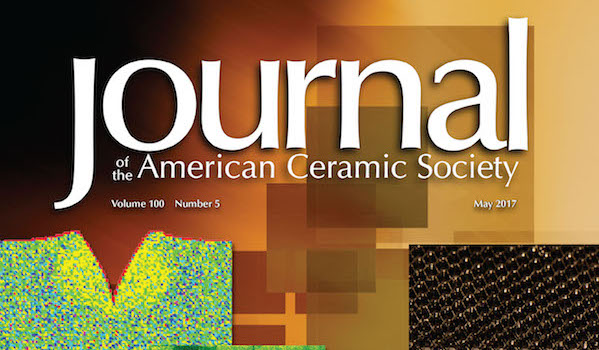
The recently released Journal Citation Reports (JCR) provides some good news for the journals published by the American Ceramic Society, and it points to some challenges for the road ahead. JCR, published by Clarivate Analytics compiles scholars journal metrics such as impact factors, citation half-lives, etc.
Of utmost importance, the articles published by the Society have yet again shown enduring quality. The Journal of the American Ceramic Society was once again the most cited journal in ceramics, having nearly 40,000 citations, which is 10,000 more than the next closest journal. Furthermore, the Journal’s article citation half-life is greater than 10 years, a measure that is achieved by few other journals in our category. Articles that survive the rigorous review process of the Journal continue to impact ceramic science long after other journals’ articles have ceased to be relevant.
Bill Fahrenholtz, editor-in-chief of the Journal of the American Ceramic Society commented, “I am excited for the opportunity to serve as editor-in-chief of the oldest and most respected journal in the field of ceramic science and engineering. I look forward to maintaining the high quality standards and enduring impact of the journal while improving our service to authors, reviewers and readers.”
With ACerS newer journals, the International Journal of Applied Ceramic Technology and the International Journal of Applied Glass Science, the total citations and citation half-lives have grown in proportion to their respective ages. This means that articles published in even their earliest volumes continue to be cited today.
The 2016 JCR Impact Factors for the three ACerS journals brought with them mixed news. The Impact Factor for the Journal of the American Ceramic Society grew from 2.791 to 2.841, though the faster growth of competing journals’ impact factors pushed JACerS down to third in its category. The Impact Factor of the International Journal of Applied Glass Science decreased slightly to 1.790, and it too fell back one place in the category rankings.
“Our focus on scholarly work on the manufacture and utility of glass-based materials and devices that provide solutions to real-world problems continues to be recognized as essential to our industry,” says Mario Affatigato, editor-in-chief of IJAGS.
The editors of International Journal of Applied Ceramic Technology made the difficult decision to publish a larger-than-normal number of articles late in 2015 to reduce its backlog. Fully knowing that publishing such a large volume of papers late in the year would have a negative effect on Impact Factor, the editors chose to provide service to its authors. Though IJACT dropped several places in the category rankings in 2016, we expect to see a significant rebound in the 2017 rankings.
According to Monica Ferraris, journal editor, “We felt it was most important to follow our primary mission of communicating the best research on the science and technology of transitioning advanced ceramics from the bench to production. We expect to see these articles to have many citations in 2017.”
Responding to authors requests for greater service and faster turnaround while maintaining the enduring quality of the journals, the editors and staff of the American Ceramic Society have taken concrete steps to change its structure and processes. The Society has simplified the journal submission process by easing file and image formatting requirements for first submissions. This change allows the editors and reviewers to focus on manuscript content. Formatting is still important, and the ACerS staff guides authors for submitting text, tables and figures formatted for publication when articles are accepted.
By hiring a managing editor and dramatically expanding the JACerS editorial structure ACerS aims to speed up the review process through redistributing expertise upwards and enabling each editor to focus on his or her content specialty. Further efforts for all journals include providing training to authors and reviewers in a parallel effort to retain the most impactful authors and reviewers and ensure the scientific excellence that leads to the enduring quality of the Society’s journals.
Finally, the Society has been working with Wiley, its publishing partner, to shorten the time after acceptance for papers to be citable and indexed. The Society’s journals are now employing an “Accepted Article” workflow where accepted articles are posted to journals’ web pages while the copyediting and typesetting processes are completed. Furthermore, we are transitioning to publishing issues months ahead of issue calendar dates, making the journals more competitive in the race for higher impact factors.
For more information about the Society’s journals and its efforts to promote scientific excellence, please contact Jonathon Foreman, managing editor, at jforeman@ceramics.org or +1-614-794-5864.
